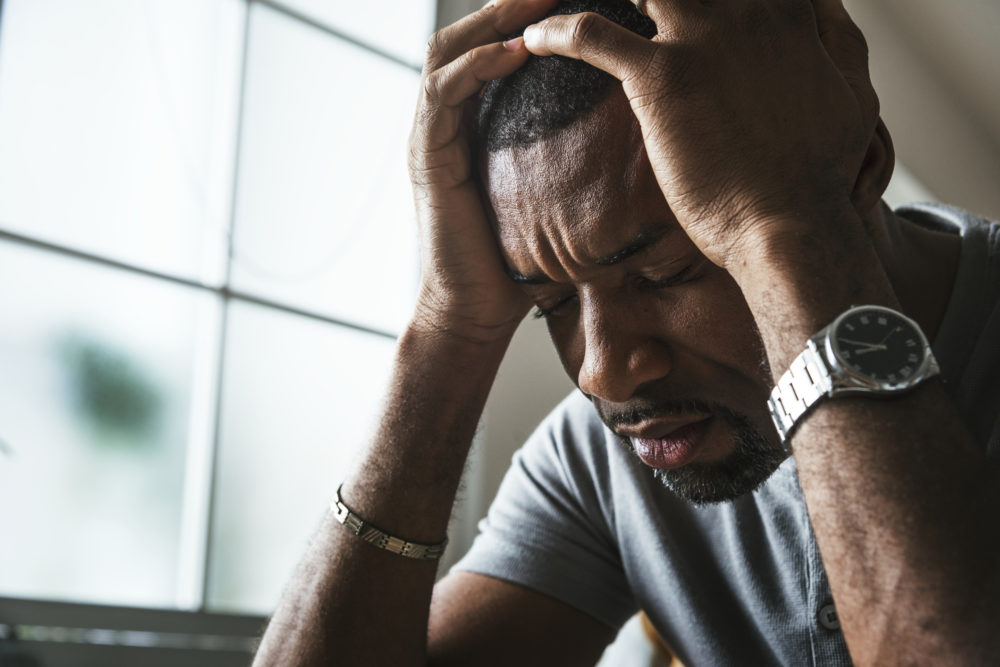Headache After Running: Should you Worry? How to Prevent It?
Headaches associated with physical activity are a common phenomenon that occurs widely across the population. Ironically, although scientists proved that regular physical effort actually prevents chronic headaches, post-exercise headaches discourage plenty of individuals from exercising.
Headaches that usually occur after strenuous physical activity are called exertional headaches or more specifically primary exertional headaches.
Let’s start by answering the important question at the beginning. Should you worry if you experience an exercise-related headache? No, you shouldn’t. They are quite common and harmless in the vast majority of cases.
Primary vs secondary exertional headaches
Primary exertional headache is by nature characterized by moderate to severe throbbing pain in both sides of the head. It occurs during or after the exercise and may last up to 48 hours later. Outside of obvious discomfort, it does not indicate any serious problem.
In contrast, secondary exertional headaches with symptoms such as nausea, vomiting, deteriorated vision, or loss of consciousness are a sign of underlying neurological problems. If you happen to experience these symptoms repeatedly, an appointment with the doctor is highly advised.

Difference from migraine
Secondary exertional headache may have very similar symptoms as migraine. But they are not the same medical conditions. The exertional headache will typically occur during or shortly after the exercise. A migraine is a chronic headache triggered emotionally (stress, anxiety, shock, or excitement), hormonal changes, or even physical effort.
Why the headache occurs after running
Most of the runners have experienced a headache after running. Especially long-distance runners running half marathons or marathons know what I am talking about. But also cyclists, weightlifters, or sprinters.
In general, this type of headache is associated with aerobic activity. According to research by Williams and Nakuda, headaches occurring shortly after short intense activity last much shorter than the ones occurring as a result of longer activities. Long headaches were always associated with longer aerobic activities.
So why do the headaches occur after running? During physical activity, the brain and muscles of your head require much more generous blood flow. In order to pump more blood into your head, the blood pressure grows.
Increased blood pressure dilates the blood vessels in your brain. These processes lead to increased intracranial pressure that, depending on the type of sport and its intensity, may cause a headache.

Headache prevention strategies
In spite of the unquestionable benefits of exercise, many people who experience post-run headaches, unfortunately, tend to reduce the length or intensity of the workout without a deeper understanding of the problem.
There are plenty of other factors that may lead to a post-run headache. Every runner should be aware of them in order to design his/her own headache prevention strategy. Such strategies include eliminating aspects that trigger headaches and we can actually influence them.
The main factors (more often its a combination) that trigger a headache after running are:
- Dehydration
- Tension in your neck and shoulders
- Low blood sugar
- Lack of warm up prior to the workout
- Magnesium deficiency
Dehydration
Dehydration headaches are in no way an exception. A lot of people heavily underestimate the importance of hydration. You should not only pay attention and hydrate during or after your long-distance run but also a couple of days prior to the run. You want to make sure you are not already dehydrated at the start.

Importance of electrolytes
During your long workout, especially in hot weather, you will lose a substantial amount of body fluid. Make sure to drink regularly. In case of a run longer than 1 hour, consider drinking electrolyte sports drinks that contain sodium and potassium which are crucial minerals for your organism.
The longer the run, the more electrolytes you lose and the more important it is to refill them for proper body functioning. Check my article on how to easily make your own homemade electrolyte drink.
Checking your urine
Don’t wait until you are thirsty! It could be already too late and you could already be dehydrated. Drink regularly even if you do not feel the thirst yet. You can make a simple hydration test by inspecting the color of your urine. Light yellow means you are well hydrated. Darker colors signal dehydration.

Tension in your neck and shoulders
According to Koppen’s and van Veldhoven’s study, around one-third of patients experiencing either exertional or migraine type of headaches report pain in the neck as an initial headache symptom.
The explanation is that muscles in the area of the neck and shoulders (mainly deltoid types and trapezius) are much more used during running than you would expect. If your headaches usually initiate by tension in this area, consider neck and shoulders strengthening exercises.
Low blood sugar
Sugar (or glucose) is the main source of energy for your body. Most of your sugar intake happens in the form of carbohydrates (pizza, pasta, white bread).
Glucose is either freely present in the blood flow or synthesized and stored in the muscles in the form of glycogen. When muscle needs energy, it breaks glycogen back into glucose and uses it to fuel energy creation.
Lack of blood sugar creates multiple challenges for your body, especially in the case of long-distance running. The less sugar in your system, the less fuel for your brain, the bigger chance your brain will react undesirably.
Nutrition tips
Fill up with carbohydrates 1-2 days before a long run – you want those glycogen stores to fill up prior to your run. Eat pizza, pasta, potatoes or white bread (oh yes, running has some unexpected advantages 🙂 )

Design your own refilling strategy during a long run – either you use energy bars, running gels or another snack such as my favorite homemade Pinole cookies, your body will need refilling while running
Quickly restore your sugar after the run – to prevent post-run headache it is crucial to quickly refill your depleted sugar stores. Eat a lot of fruits or chocolate if you like. Me personally, I drink a chocolate milkshake within half an hour after the run and since I do that, my headaches occur with much less intensity.
Lack of warm-up prior to the workout
This advice is absolutely crucial to prevent headaches prior to your (not only running) exercise. According to the study made by Varkey, Cider, Carlsson and Linde, which examines the impact of 15-minute warm-up followed by 45 minutes rather intensive exercise. It may not only help to prevent exercise-related headaches but also increase tolerance to exertional headaches and generally reduce their occurrence.

Magnesium deficiency
Magnesium is an effective prevention against headache which occurs after running. According to Nadelson, an insufficient level of magnesium in cerebrospinal fluid (fluid that surrounds the brain and the spinal cord) may lead to an exertional headache.
Around 30% of people who experience exercise-induced headaches manifested by pounding head actually have low levels of magnesium.
Increasing magnesium levels
Using 400 mg daily magnesium supplement may reduce the frequency of headaches and is the easiest and quickest solution for most people. Even though, according to Teigen and Boes, it is more efficient to increase the intake of dietary magnesium (eat more greens, nuts, seeds) than using magnesium supplements.

Post-run headache summary
Based on studies mentioned in this article, it is clear that long-lasting aerobic exercise (such as long-distance running), especially in hot weather, could often lead to exertional headaches.
In general, there is nothing to worry about it. Throbbing pain on both sides of the head is caused by the blood vessels dilating in order to adjust to higher blood flow.
When the headache strikes, search for a dark room and try to sleep. Reducing noise and light will help to relieve the pain.
Next time you go for a long run, make sure to follow 4 simple rules:
- Drinking
- Nutrition
- Warm-up
- Magnesium
In case you experience vomiting, vision issues, or loss of consciousness during your headaches, it can signal an underlying medical issue. Make an appointment with your doctor.






